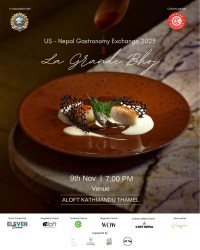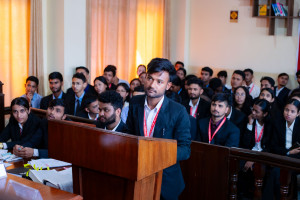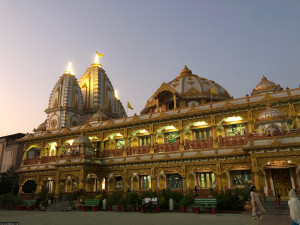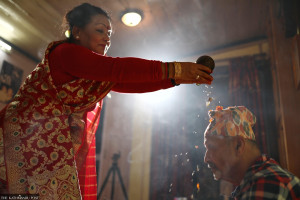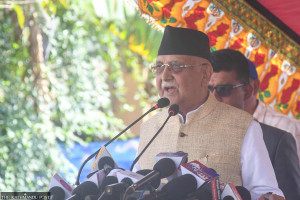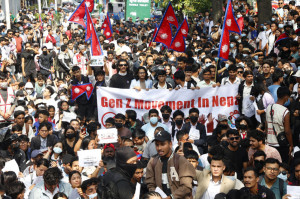Culture & Lifestyle
Why we must return to Bombay cinema of the 1950s and 1960s
‘Baazi’ was the first urban crime thriller in the history of the Bombay film; it possessed all the characteristics of the classic noir.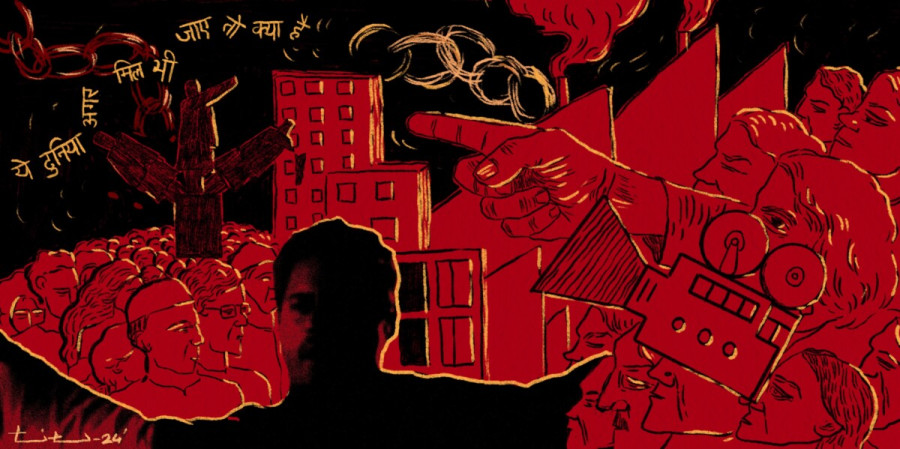
Neera Chandhoke
The philosopher Jean Jacques Rousseau (1712-1778) reminded us that though man is born free, he is everywhere in chains. The inference is that we break one chain, and others arise to strike us on the face. Consider that August 1947 brought India freedom. But along with old moribund traditions, new chains erupted to bind us. This is made clear by great Bombay films, which in the 1950s and 1960s launched a massive critique of politics and society. Sadly, no more.
Recollect the playful and satirical song, ‘Yeh Hai Bombay Meri Jaan’, in the film (1956) CID produced by Guru Dutt and directed by Raj Khosla. The comedian Johnny Walker driving a Tonga, lip-syncs the song penned by Majrooh Sultanpuri. It is set to music by O.P. Nayyar and sung by Mohammed Rafi: ‘Beghar ko awara kehte hai haas haas, khud kate gale sabke kahe isko business (This is Bombay my love. Here they call the homeless vagabonds. They cut the throats of people and call it business)”.
Another line sung by Walker is a telling comment on the city: ‘Insan ka nahi yaha naam-o-nishan (There is no sign of humanity; this is Bombay)’.
In a song from the 1958 Phir Subah Hogi directed by Ramesh Saigal, the lyrics of which were written by Sahir Ludhianvi, and music given by Khayyam, Raj Kapoor lip-syncs an ironic take on the famous poem written by Ullama Iqbal, “Sare jahan se accha Hindustan hamara.” The song in the film runs:
“Chino-Arab hamara, Hindustan hamara, rehne ko ghar nahi hai, sara jahan hamara (China, the Arab world and India are ours. We do not have a house to live in, but the whole world is ours).”
Such a damming indictment of the way the promises and the poetry of the national movement were betrayed by postcolonial India!
The social context of great films made after independence right up to the 1970s and the era of escapism, was the disorienting experience of modernity, the anomie of urban existence, uncertain identities and debilitating poverty. The country was free, but people continued to live in destitution in dismal shanty towns that bred criminals.
The sense of anomie and alienation was captured in two blockbuster movies made in 1951.
The first was Awara, produced and directed by Raj Kapoor and written by K.A. Abbas. The lyrics were written by Shailendra and Hasrat Jaipuri and the music was given by Shakar-Jaikishan. Awara was a path breaking film that became internationally famous, particularly in the Arab world and in the Soviet Union. Its popularity extended to communist China. Chairman Mao Zedong reportedly said that he loved the film. Its songs became phenomenally well known, and it had a musical score that captured people’s hearts. At the core of the movie was a deceptively simple question. Can we hold our dashing but morally ambiguous hero responsible for the petty crimes he commits? Or does the responsibility lie with an unjust, cruel, insensitive and mocking society?
Great films compel the audience to recognise the great questions of the day. They shape social opinion and moral sentiments.
The second 1951 film Baazi was directed by an aspiring director who became a legend in his time, and for times thereafter: Guru Dutt. It starred Dutt’s friend, the debonair Dev Anand who had set up his own production house Navketan Films that produced the film. The music director was S.D. Burman, the hugely talented Sahir Ludhianvi wrote the lyrics, and Balraj Sahni scripted parts of the film. Baazi drew upon a 1946 Hollywood film Gilda. It asked the same moral question as Awara did. Is a man culpable for a crime if he cannot afford medical care for his family, in this case Dev Anand’s sister? Perhaps yes, perhaps not.
There are few moral absolutes in the real world, as distinct from the world of pure ethics. Deviations from accepted ways of life have to be located contextually before we rush to judge the perpetrator of the crime. Baazi, believe film scholars, was the first urban crime thriller in the history of the Bombay film; it possessed all the characteristics of the classic noir, or the dark film bred in the dislocated relations of modernity.
It is precisely this feeling of disorientation that the justly acclaimed film maker Guru Dutt taps marvellously in his Pyaasa. In the film loneliness is a psychological condition, bred by an alienating modernity, and a materialistic, exploitative and hypocritical society. Dutt reflects and represents his own loneliness and feeling of loss in his cinema, despite a productive and acclaimed career. His life was marred by isolation to the point he committed suicide. The one film captured this feeling was his acclaimed Kaagaz Ke Phool that deals with success and loss of success, with love and longing, the loss of love and frustrated longing, with creativity and the passing of creativity. There are no certainties in this world.
Yet his best film is arguably Pyaasa (1957). Originally called Kashmakash, the script was written in 1947-48, and revised with the help of Abrar Alvi. The re-crafted film was released in February 1957. The character of the leading man Guru Dutt, an impoverished poet, Vijay, is established in the first scene when he hums as he lies on a grassy park:
“Mein doon bhi to kya doon tumhen ai shaukh nazaaron/Le de ke mere paas kuch ansoon hain kuch aahen (What I can give you O beauties of nature, except tears and sighs).”
As a young college student, Vijay was in love with Mala Sinha who married a rich publisher played by Rehman. There are other things, such as material security, she tells Guru Dutt, when they confront each other after she is married. Confronted by a double betrayal that of his beloved, and of his brothers who deny him shelter, Vijay becomes melancholic. He sleeps on benches in the open, and reflects on the perfidies of human relationship where all that matters is material wellbeing. He is a gifted poet, but publishers reject his philosophical, morose, and realist poetry. One of them sells his poems to the re-cycler.
Made barely 10 years after independence, Guru Dutt wrote in this film the history of the post-colonial moment in a dramatic and poetic manner. And then there was the film itself. The author of Guru Dutt: A Tragedy in Three Acts, Arun Khopkar, writes that Pyaasa haunted me, its images returned unexpectedly to mind, the beetle that was ground under the heel, Gulabo trampled by a mob that turned hysterical at the sight of a poet whom they had thought had died, Meena’s blurred image in the glass pane of the lift, and Vijay in rags casting an attenuated shadow. To these unforgettable images we can add the split images of Vijay and Meena on the multiple glass panes of the elevator.
Watching Pyaasa we realise that in a space of ten years after Partition Indian society had lost the camaraderie cultivated by organisations such as the PWA and IPTA that had brought it together during the freedom struggle. Indians had become obsessed with wealth and power even at the cost of integrity and obligations to fellow citizens. Millions lived in dilapidated surroundings, overcrowded tenements, urban detritus, and smelly open drains, all of which are guaranteed to generate neurosis. The city is supposed to be quintessentially modern; it is without compassion. And when this confronts a gifted, sensitive poet, Vijay, he feels claustrophobic, his vision becomes dark and despairing, his poetic imagination is clouded with desolation. He is more at home in the open terrace of a decrepit house where sex workers pursue their calling, or in open parks that offer him benches to sleep on. He is so alone that the woman who betrayed him acquires a disproportionate role in his memories.
The only people who understand the artist in Pyaasa are the sex worker Gulabo and the masseur Abdul Sattar. These people who are scorned, humiliated and banished to the margins of society understand his despair. Having experienced pain, they understand the pain that the poet experiences; they share his loneliness, his disillusionment and frustration. Perhaps it is only at the margins of society that we find compassion for other human beings. The rest of society is too busy exploiting the labour of others, flourishing its wealth, and exhibiting vulgar and repulsive greed for more.
Vijay, the gifted poet is not consumed solely by his own pain and sorrow. He is no Devdas, an unhappy man who made everyone else unhappy. Vijay’s poetic imagination allows him to look beyond his personal pain and sorrow, empathize with others and launch a major critique of a selfish, manipulative society and its hypocritical mores. Wandering down the streets of the red-light area where he has been taken by friends, he can in the words of the magnificent poet Sahir Ludhianvi and in the melodious voice of Mohammed Rafi sing:
“Yeh mele, yeh badnam ghar dilkashi ke, yet mite huye kaaravan zindagi ke, kaha hai kaha hai muhafiz khudi ke? Jine naaz hai hind par voh kahan hai? (These fairs, these disreputable houses of sexual pleasure, these looted caravans of life, where are the guardians of morality? Where are those who are proud of their country?).”
‘Kahan hai, kahan hai muhafiz khudi ke,’ one of the most magnificent critiques of our insensitive ruling classes, who sanction the exploitation of women, is conceptualised by Guru Dutt, adorned with words by the gifted Sahir, and enacted by our poet who gives voice to the pain of others; of those women who are compelled by circumstances to sell their bodies to men, both fathers and sons. Till today the words “jinhe naaz hai Hind par woh kahan hai?” resonates.
Ironically Vijay gets fame only when he is mistakenly reported dead. Gulabo summons up the courage to visit the publisher who happens to be the husband of Vijay’s ex-girlfriend, and requests him to publish the poems. When published they are a roaring success. At a memorial meeting on Vijay’s first death anniversary, those who had shunned him earlier, now weep shallow tears.
Vijay reappears at the door of the balcony with his arms stretched out on both sides of the entrance and asks poetically:
“Yeh duniya agar mil bhi jaye to kya hai? ‘Yeh basti hai murda parastho ki basti, yahan to jeevan se hai maut sasti (This is a world that worships the dead, even if we get this world so what?).”
Khopkar writes that the finest scene in the film is Vijay returning after his ‘death’ and presenting himself as the resurrected Christ at the function to memorialise him. Christ himself is, like the poet, aesthetically simple, impoverished, suffering and profoundly compassionate. The grief and anger that is poured out in the song is not against the audience – Khopker writer that it is the sublime moral indignation of Christ, driving the usurers out of the House of God…”The framing and the lighting have the kind of beauty that arouses in us a deeply religious response”.
The renouncer who once again has an opportunity to embrace fame, decides to reject the chain wrought by personal glory. He turns his back on the riches that await him, critiques the shallow and brash conventions of the modern world, and walks into the sunset with Gulabo another citizen of India who lives on the margins shunned by society.
Vijay once excluded from the charmed circle of success, disdains a world obsessed with fame, wealth, and palaces. He, in the classical tradition of the public intellectual, stands alone, outside society. Only then can he enunciate a critique of a greedy, grasping materialistic world. The film is a devastating comment on an India which had fought for independence but which had witnessed the forging of new chains.
Political freedom is meaningful in itself but there is no intrinsic link between political and social and economic freedom. The latter has to be secured through intensive effort and innovative strategies of social distribution. For that the ruling class has to be sensitive to the pains of its people. It has proved supremely insensitive. And forged new chains for us.




 17.12°C Kathmandu
17.12°C Kathmandu





